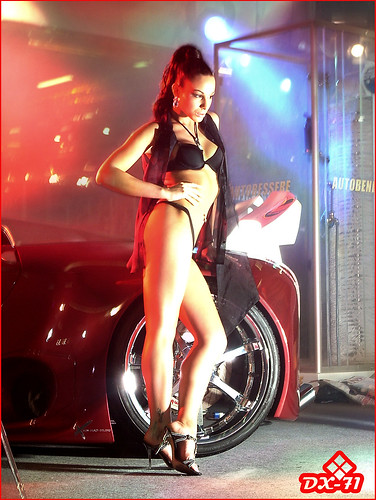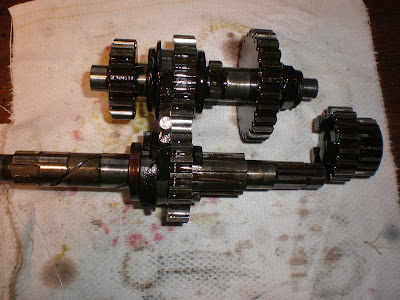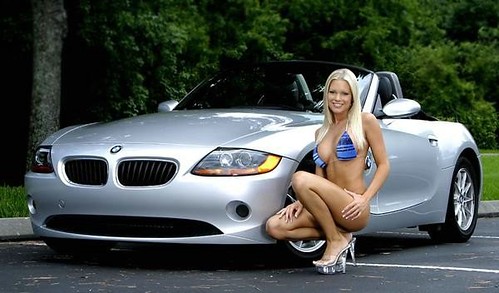Minnesota has a Limited helmet law. If you are under your learner's permit, you must wear a helmet. If you are under 18 years of age, you must wear a helmet. If neither apply to you, it is your choice. (Funny because we have a mandatory seatbelt law in a car(cage) with airbags. Go figure.
When I had my motorcycle learner's permit, I had a black full faced helmet. It was a Fulmer.
I hated wearing this thing with a burning passion. I couldn't wait to ditch it. I got my motorcycle endorsement, and of course, ditched the helmet.
I rode most of my riding years without a helmet. Then I got into a car accident. I was going through an intersection. I was in the right hand through lane. There was no turn lane here, and lady made a last minute right hand turn from the left lane into my bike. I was ejected, and was hurled through the air like Superman. She was in a Suburban, and said she didn't see me. Regardless, she made a turn from the wrong lane. I totaled that bike. I was injured pretty bad, and couldn't walk for about a month. I should have sued her ass, but I was too young, too naive, and I'm not the suing type of person. That accident freaked me out bad. I was also too new of a motorcycle rider to realize just how bad the motorcycle riding bug had bit me. I swore, I'd never ride again. I got married after that, and it wasn't too long before I couldn't hear, or watch another motorcycle going down the road without having to turn my head as they passed by to watch them with envy in my gaze. This went on for quite some time. My wife could see it was slowly killing me, and making me not the person she met, or married. We jointly agreed that I could get another motorcycle, but I had to wear a helmet. I agreed. I got another bike, I got another helmet. This time a Bell half shell DOT approved helmet. Since I've never ridden with a windshield, and never will, I refer to these DOT half helmets as (kites, or wind catchers if you will). I also have a small head, and am not a really big guy, so I looked like Marvin the Martian wearing it. Mushroom head is what some people like to call it. I F'n hated that thing so bad, it made me not want to ride if I had to wear it. Gradually, I stopped wearing it, and gradually, my wife begrudgingly accepted that I was going to ride, and I was going to do it without a helmet on my head.
Years passed, and I got in another minor accident. This time it was my fault. Too much speed, not enough time to slow. I slid, then high sided, and was ejected. (Stupid rookie mistake). Guess I should have taken those advanced rider courses. Needless to say, I survived. The bike was fixed, and I continued to ride without a helmet.
Last summer, July 20th, 2008, to be exact was a riding, life changing day for me. I have not spoke of this on my blog until this post. I got in a pretty scary motorcycle accident. Again my fault. (By the way, That you tube Video I just posted of Custom Paint repair techniques was my own bike getting repaired after my crash from last summer. I healed, and had the bike made "ready to ride" so I could ride the rest of the season, then had it fixed for real this last winter. It was in the shop until early- to mid Spring.)
Anyway, back to the crash...
I was planning on heading down to our family cabin, which is about an hour and a half south of my house. It was going to be a beautiful ride, and when I got there I was going to mow the lawn, and maybe wet a line and see if some fish were biting, then visit my folks on the way home. I only made it about 15 minutes south of my house before the possibly near fatal moment happened. I was traveling Southbound on Interstate 35W, and getting ready to exit onto State Highway 10. The exit ramp off the freeway- entrance ramp onto 10 basically just takes up the shoulder. There is no other room for this ramp. Thusly, within inches of the outside white line alongside the ramp is a guard rail. I was traveling the speed limit on the freeway at 70 MPH, and slowing just slightly for the exit, so going approximately 65 MPH, hugging the right side of the lane by the guard rail. I must have ran over something metal, because I heard a metal clanging sound, and I looked down and to my left to see what it was. I counter-steered just enough to scrape the guard rail, then bounce off of it, and down I went at about 65 MPH. I had no helmet, and was wearing only jeans, T-shirt, and boots. I slid across the pavement on my back , my side, and my right arm. Luckily I had a Grab-it Pack on, and It took the brunt of the slide on my side. I got nasty road rash on my back and my right arm. The arm by the elbow was ground almost to the bone and the knuckles on my right hand WERE down to the bone. As I slid down the road, I remember consciously thinking to myself as I was scraping the guard rail, that this can't be happening. This is like a F'n nightmare! And then I thought (excuse my French), "OH FUCK, I'M GOING TO DIE!" Then came the pavement, and the slide. My next two thoughts were "keep the head up. & Please God don't let my head hit the pavement." I stopped, and couldn't believe I was alive. I could not believe what had just happened. I could not believe no one ran over me. I couldn't believe what my arm and my hand looked like. It took a while for the pain to kick in due to the adrenaline, and partial shock. After a while it was pretty extreme, but I knew I'd have to deal with it. I had no choice. Moment's later people came to help get the bike out of the road, and make sure I was O.K. I thanked them all for stopping. I was lucky in a sense that this was a busy road, because what had happened to me did not go
unnoticed. I tried to use my cell phone to make a call to my wife, and tow truck, but my cell phone was in the Grab-it Pack, and was crushed from the impact. A short while later a State Trooper arrived on the scene to help me. He was a great guy, and rides motorcycles himself. He was compassionate, helpful, kind, and caring. I used to have a grudge against most cops in general, till this moment. I realized that they aren't all out there to "nab" us and give us tickets, but that they can, and will also help in a time of need. (By the way. I have a quote that says..." May all your encounters with the law start with the words, "Nice Harley!") Yeah, he said it.
The tow truck came, I actually helped him load my bike on the flat bed, and rode home with him to my house, and dropped off the bike there. It was a day the bike shop was closed. My wife was home when the tow truck backed up the drive. She saw me, and thought at first that my bike just broke down or something until I hopped out the cab of the tow truck and she saw all the road rash. I said at that point, "Yeah, I'll wear a helmet now. " She never even asked me to stop riding, ever. Bless her heart. The one time I declared I would stop riding, I said it on my own free will. Stupid me. What was I thinking. While recovering, people would ask me, "Are you going to stop riding?", That's like asking someone who doesn't ride, who has had an asthma attack, are you going to stop breathing? My response... "I'll stop riding when they bury me." Motorcycle accidents suck. Don't get me wrong. For those of you who have never had one, I hope you never do. For those of you who have, and continue to ride. You know what I'm saying. For those of you who have crashed, and gave it up. Well I guess the riding bug never bit you as hard as it bit me. I've ridden more years than not. It's not just something I do, It is part of who I am.
Needless to say, I did say I'd wear a helmet now, so this brings me to my quest again for the perfect helmet. Mind you, riding without a windshield makes a huge difference on what you can and can't wear comfortably without feeling like you head is going to be torn off at anything over 55 MPH.
I hate full face, so that was out. I hate mushroom head, so that limited my choices. I bought two different Novelty style half helmets, and thy didn't fit very well, and were made poorly so all they did was shift, and catch wind. These suck! IMO. Add them to the collection of worthless helmets. So let the quest continue.
This spring I was at the annual Spring Flood Run and took some pictures. Remember that Old Skool chopper? It had an old skool helmet hanging off the handle bars. I thought to myself "That ain't so bad. I might be able to wear one of those." It looked pretty cool, and might just be the ticket. So I did some research on line. I found a Fulmer 3/4 open face Old skool bobber style helmet that IS DOT approved! It is low profile, fits nicely, looks cool, no mushroom head, and is I believe the ticket for me. It is very hard to find a perfect helmet if you can't test ride with them, so I believe many of you also have a collection of helmets you don't use. I did a lot of research before going out and buying one of these. It does fit snugly, does vent-breathe, is extremely lightweight,, and has very little drag, (even at 80 MPH!) and comes with a snap on visor, and you can purchase optional bubble facemask. You won't find them in most stores. You have to go to a dealer that sells Fulmer helmets, have your head measured, and special order it. I've had mine for a few weeks now, and I love it. I had to buy riding goggles though because the helmet changes the course of wind flow by your eyes, so shades don't work so well, unless you don't mind dry watery eyes. The color selections are fabulous! Since it's 3/4, it can be warm. This can be good and bad. I guess it depends on the weather. If you are into old skool, this might just be the ticket for you!
If you want to see pictures of them, read other reviews, etc., just Google "Fulmer V2 helmet".
This will bring up lots more information. By the time I was done researching, reading great reviews, etc., I was 99% sold on this helmet. All that was left was to see someone with it on. Since I couldn't find one at a store, I couldn't find out what they looked like on my head. I had to rely on the internet for this. So I searched for images of it. I did have a problem finding pictures of people actually wearing the helmet. Everyone showed pictures of the helmets, but I wanted to see for myself if the claim of "No mushroom head" held any merit. I was only able to find one YouTube video of a guy wearing it while riding that sold me on it. I figured for anyone interested, here is a couple of pics of me with it on my noggin.
LOOK MA, NO MUSHROOM HEAD!










































.bmp)

.bmp)








